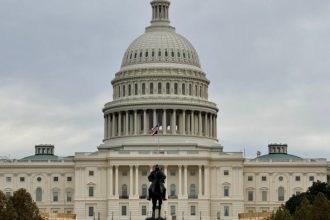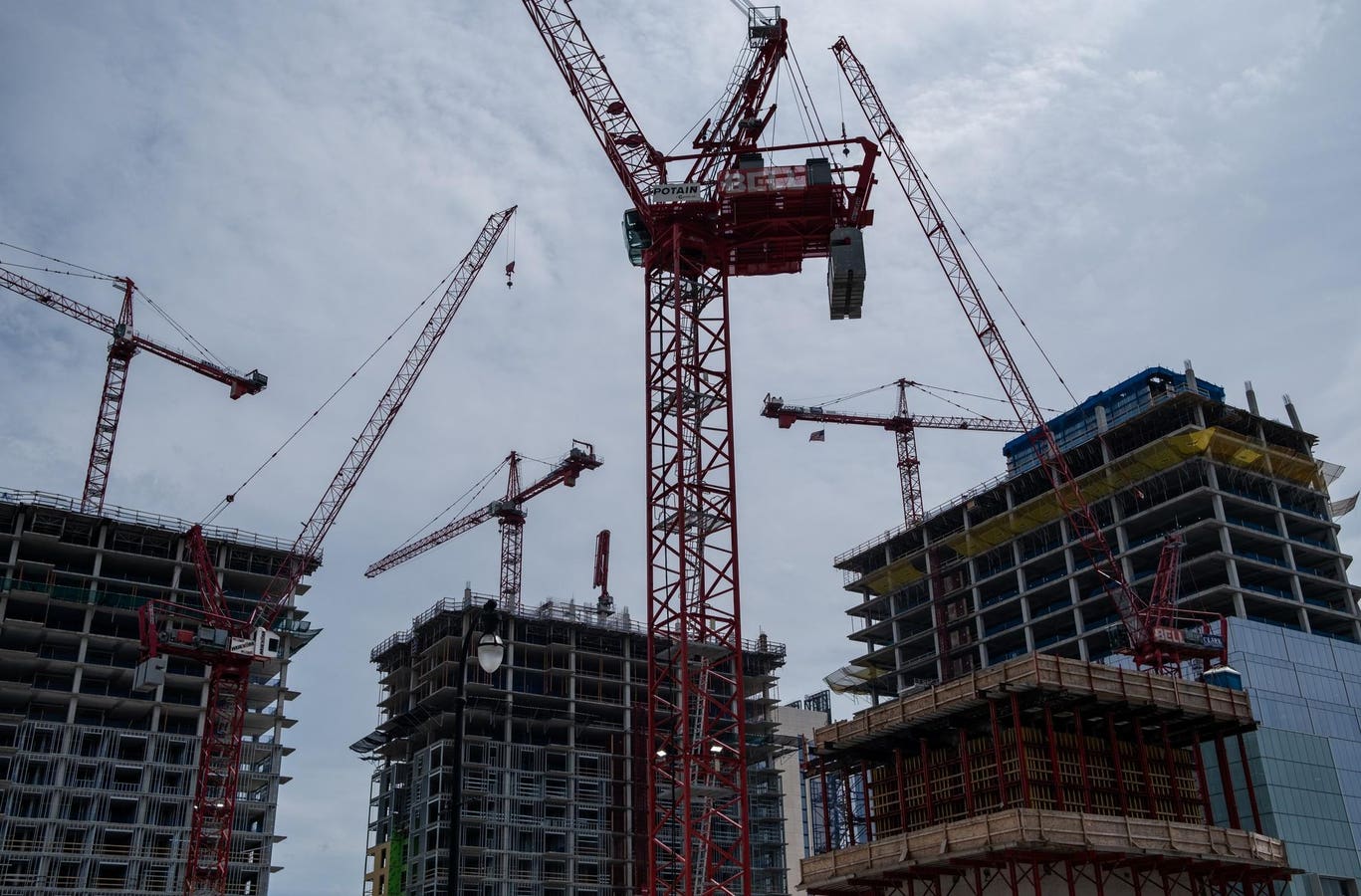A lot of No. 1 hits come out of Nashville, Tennessee’s country music industry each year. But Music City accomplished a feat of its own by ranking as the best overall real estate investment prospect for the third consecutive year while Florida cities lost some of their luster as development across the country slows and economic concerns persist.
The Tennessee capital becomes the only metropolitan area to repeat at No. 1 for three years running in the 45-year history of the annual “Emerging Trends in Real Estate” report from influential nonprofit research and policy organization Urban Land Institute.
Released Oct. 31, Nashville’s ranking hits as the real estate industry nears another year of high interest rates, slower development, fewer property sales, a potential reckoning with lower real estate values and lingering recession fears.
Consulting firm PwC and ULI interviewed 600 real estate professionals individually and received survey responses this year from nearly 1,260 people in the industry for the report, about 200 fewer respondents than last year’s survey.
Roughly a third of the responses came from private property owners or commercial and multifamily real estate developers. Real estate advisory, service firms and asset managers made up 19% of the responses. Other responses included lenders, construction professionals, homebuilders, residential land developers and investment managers.
Nashville’s economic development wins over the past several years with e-commerce giant Amazon, investment management firm AllianceBernstein and technology behemoth Oracle continue to pay dividends in the minds of real estate industry professionals.
Amazon has more than 2,500 employees in Nashville with the goal of reaching 5,000. AllianceBernstein has roughly 1,000 employees. Both opened their offices last year. Oracle, the biggest score in the city’s history, is in the planning stages of a massive campus near downtown Nashville that promises to eventually employ 8,500 people by 2031.
A deal to build a new $2.1 billion stadium for the NFL’s Tennessee Titans across the river from downtown is expected to fuel more development. Boston-based The Fallon Co. won the rights to develop the 30 acres around the new stadium.
Florida Cities Fall in Rankings
Last year, the ULI’s rankings had 14 cities in the top bracket for best of the best. There are 13 this year, and the rankings had major movement among some of the metros.
Real estate professionals seem to have cooled on Miami, Orlando and Tampa/St. Petersburg, each of which experienced substantial job and population growth over the past several years that drove apartment and single-family housing construction. All dropped from the rankings’ highest bracket.
Tampa fell from No. 5 last year to 18th. Miami dropped from No. 7 to just outside of the top bracket at 14th. Orlando fell from 13th last year to 19th in this year’s report.
Meanwhile, there were big moves up. Seattle jumped seven spots to 10th. Phoenix vaulted from the No. 9 spot last year to take the No. 2 spot from Dallas/Fort Worth, which fell to third.
Texas cities still dominated the top bracket. In addition to Dallas, Austin, Houston and San Antonio are repeats from last year. Austin topped the list for best homebuilding prospects next year, knocking San Antonio to second.
Last year, Texas had the second highest domestic net migration with 230,961 people, second to Florida’s 318,855, according to Census Bureau data. Census data showed that migration into Texas pushed the Lone Star state to second only behind California for state’s with population above 30 million people.
Denver, North Carolina metros Raleigh/Durham and Charlotte, Boston, San Diego, Atlanta carried over from last year’s ULI report.
Economic Concerns
Commercial real estate lending started tightening last year when the Federal Reserve raised interest rates quickly last year to tamp down inflation. Landing a loan grew tougher when several banks failed.
Survey respondents said the worst inflation is in the past, but few believe commercial mortgage rates will fall next year. Such a prospect is expected to continue curtailing investment sales as well as new construction.
Interest rates and cost of capital were the top economic and financial concerns in the ULI’s last report as it was last year.
Worries of a “real estate Armageddon” surfaced repeatedly within the industry this year. An Oct. 27 report from the National Association of Realtors listed Armageddon as a one of 10 potential roadblocks for the commercial real estate industry next year.
Hugh Kelly, a real estate economist, wrote in the NAR report, however, that the “outlook may not be as dire as it seems.” The labor market remains strong but there are concerns over $1.5 trillion in commercial real estate debt that matures by the end of 2025, Kelly noted.
Commercial real estate buyers are out there with the money ready to snap up properties but are waiting on sellers to come down more on prices. The expected crash in values hasn’t happened.
Ric Campo, chief executive officer of Houston-based apartment firm Camden Realty Trust, told analysts on its Oct. 27 third quarter earnings call that sellers have narrowed the gap some but uncertainty remains with what the Fed has planned for interest rates and the impact of new supply of apartment units on existing properties. The “wall of capital” is simply waiting and “there isn’t a lot of distress in the marketplace today,” Campo said.
Real estate firms CBRE and Cushman & Wakefield are among those still forecasting a mild recession next year. But the forecasts have been pushing later and later because of how the economy keeps holding up.
“While the U.S. economy remains surprisingly resilient, the rapid rise in interest rates will eventually lead to sharply lower growth,” CBRE said in late September.
The Great Reset
In last year’s “Emerging Trends” report, ULI’s theme was that the real estate business would return to normalcy. But this year it became a question of what normal looks like, particularly for the core real estate sectors – office, industrial, multifamily and retail.
The office market still struggles with vacancy amid company employees not filling desks on a regular basis. “There’s no sugarcoating it: sentiment in the office market is grim, and it may not have hit rock bottom,” the report said.
Apartment rent growth that hit record highs in 2021 and into last year slowed considerably among the busiest Sunbelt markets under the weight of historically large construction pipelines that followed job and population growth. Industrial real estate, another pandemic winner, has slowed.
But retail, which was pummeled during the pandemic and struggled for years prior to the pandemic, now is the bright spot because consumers have continued spending.
Investment sales across all property types, though, have dropped considerably this year because of interest rates. Industrial property sales were down 49% through the first six months while office property sales were down 62%, retail property sales dropped 48% and apartment sales fell 68%, according to a midyear report from Foundry Commercial.
ULI changed the theme this year to the “The Great Reset,” nothing that the “past is no longer the prologue” and that old assumptions about market dynamics, pricing and risk need to be revisited.
“A consensus is growing in the commercial real estate community that the world we’re looking at now is the world we’ll be living in for a while,” the report said.
A head of an asset management firm told ULI interviewers that what now defines core commercial real estate could change with growing niches such as medical office buildings, student housing, self-storage and data centers becoming bigger parts of real estate portfolios.
“Looking forward, I expect some of what has been a little bit more niche or specialized becomes a bit more mainstream,” the manager said.
Read the full article here





